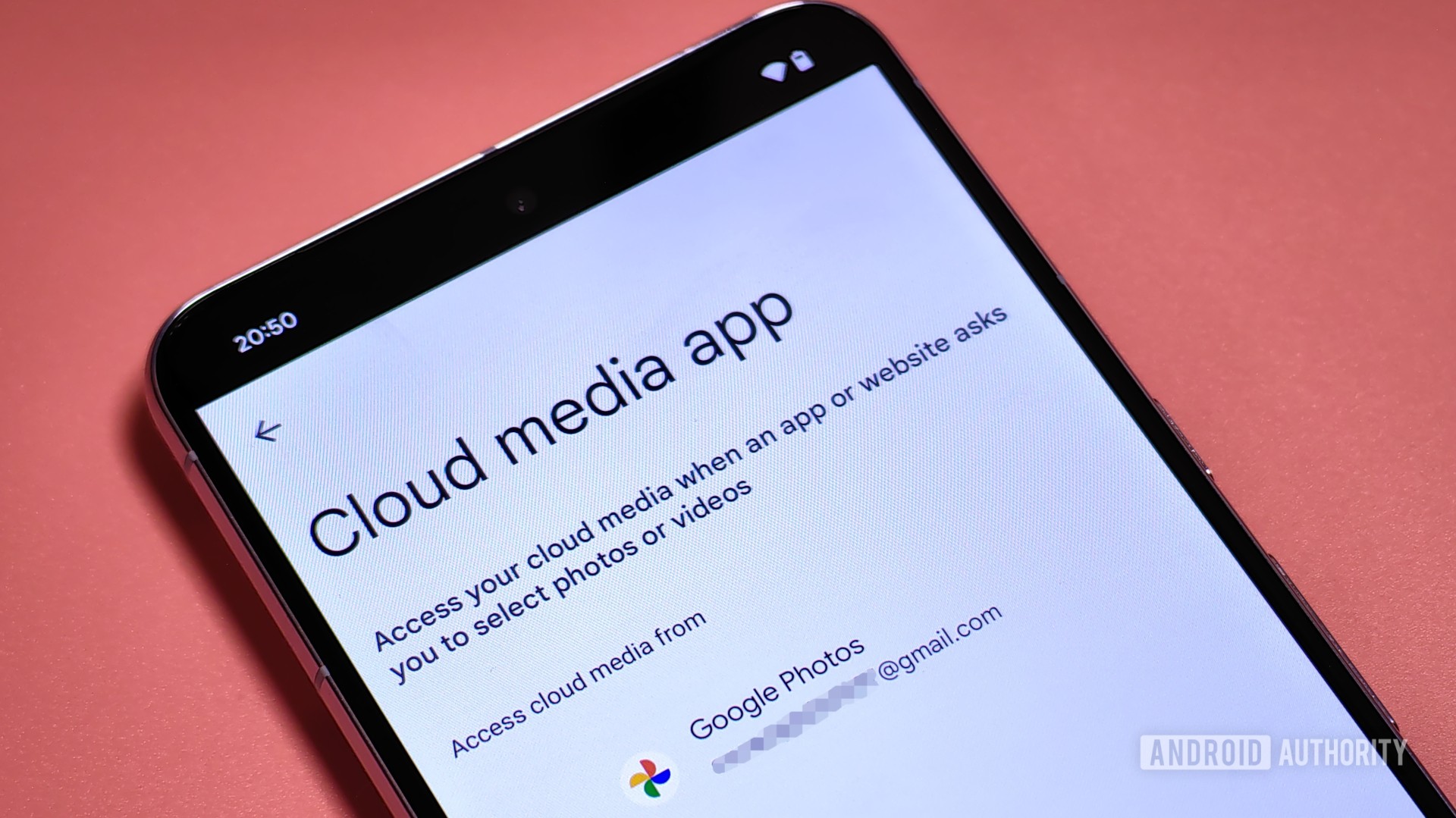
Mishal Rahman / Android Authority
Turkish lire; Dr
- Android 13 added a new photo selection experience that lets you specifically select photos or videos to share with an app.
- Since its launch, Android’s photo picker has been limited to selecting photos or videos stored locally on the device.
- Google Photos is preparing to integrate with the photo picker so you can share photos or videos stored in the cloud.
One of the main features of last year’s Android 13 release was the new Photo Picker system. Photo Picker lets you choose exactly which media files you want to share with the app. In contrast, the custom media picker used by many apps either has access to all or none of your photos and videos. It would be great if more developers adopted Android’s Photo Picker since it’s more idiosyncratic by design, but there’s a good reason why many don’t: it’s still missing basic features like letting you select media files stored in the cloud. However, that may change soon, as we’re finally seeing signs that cloud content from apps like Google Photos will appear in Photo Picker on Android.
If you’re not familiar with Photo Picker for Android, I don’t blame you, since there aren’t a lot of apps using it right now. Photo Picker is available natively on all devices running Android 11 and above because it is part of the upgradable Project Mainline module, but it is also available on devices running Android versions as far back as Android 4.4 thanks to the backdoor provided by Google Play Services. Here’s what Photo Picker currently looks like if you want to find an app that calls it:
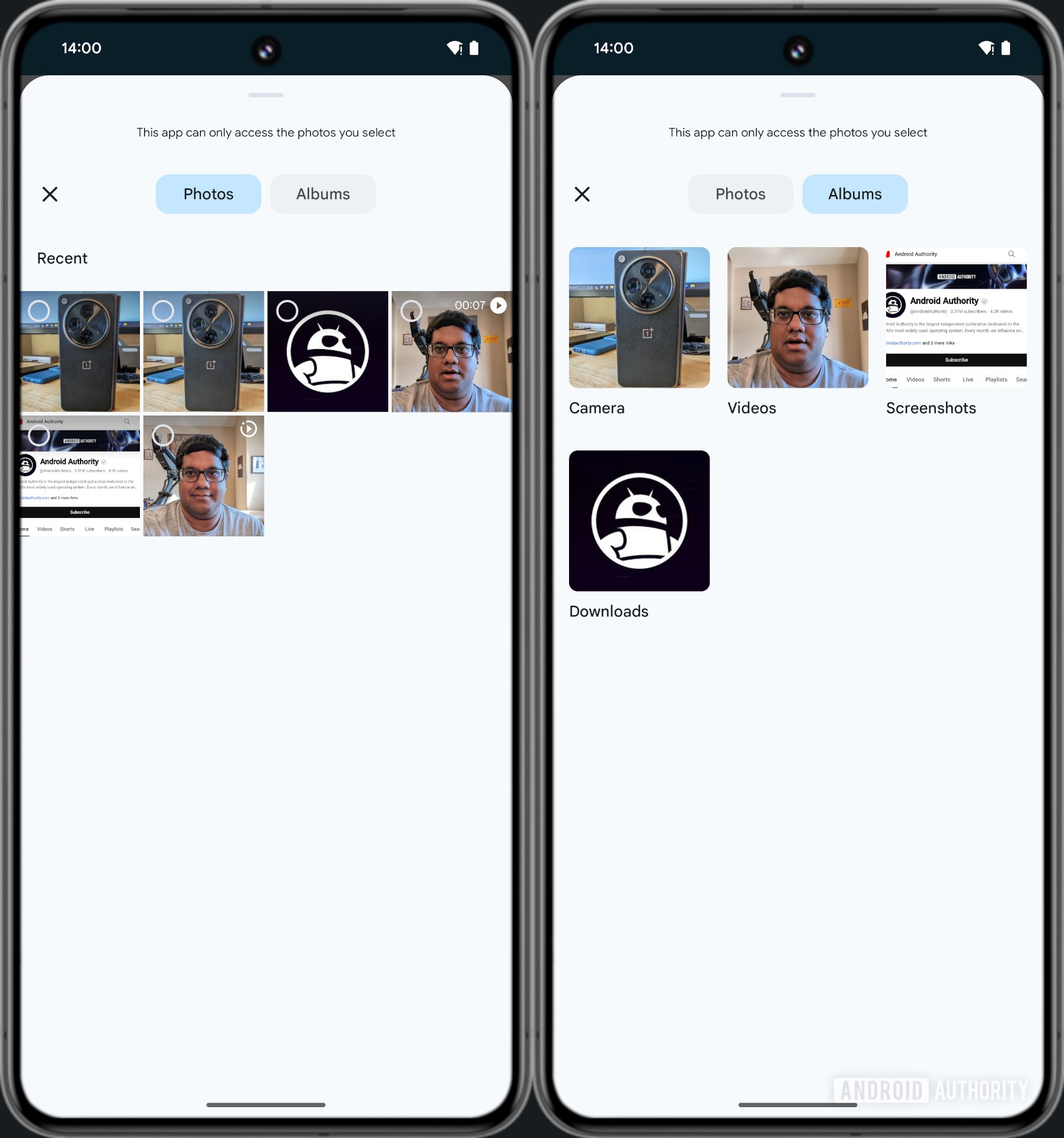
Mishal Rahman / Android Authority
How Photo Picker looks on Android without cloud media support
As you can see, Photo Picker has two tabs: “Photos” and “Albums”. The Photos tab shows you all your photos, videos, or both in reverse chronological order. The Albums tab shows you media items from your camera, videos, screenshots, downloads, and favorites albums on your device. If you store all your media files locally on your device, Photo Picker will display all the media files you might want to share. However, if you store most of your photos and videos on Google Photos, Photo Picker on Android will miss a lot of stuff.
Google realized that this would be a problem for many users, which is why it designed Photo Picker on Android to support selecting items from cloud media providers from the beginning. However, cloud media providers don’t automatically appear in Photo Picker on Android; They need to implement an Application Programming Interface (API) that gives applications read-only access to media files stored in the cloud. This is similar to how older system file pickers worked with cloud media providers, but since this experience has been around for years now, many applications have had time to integrate with it.
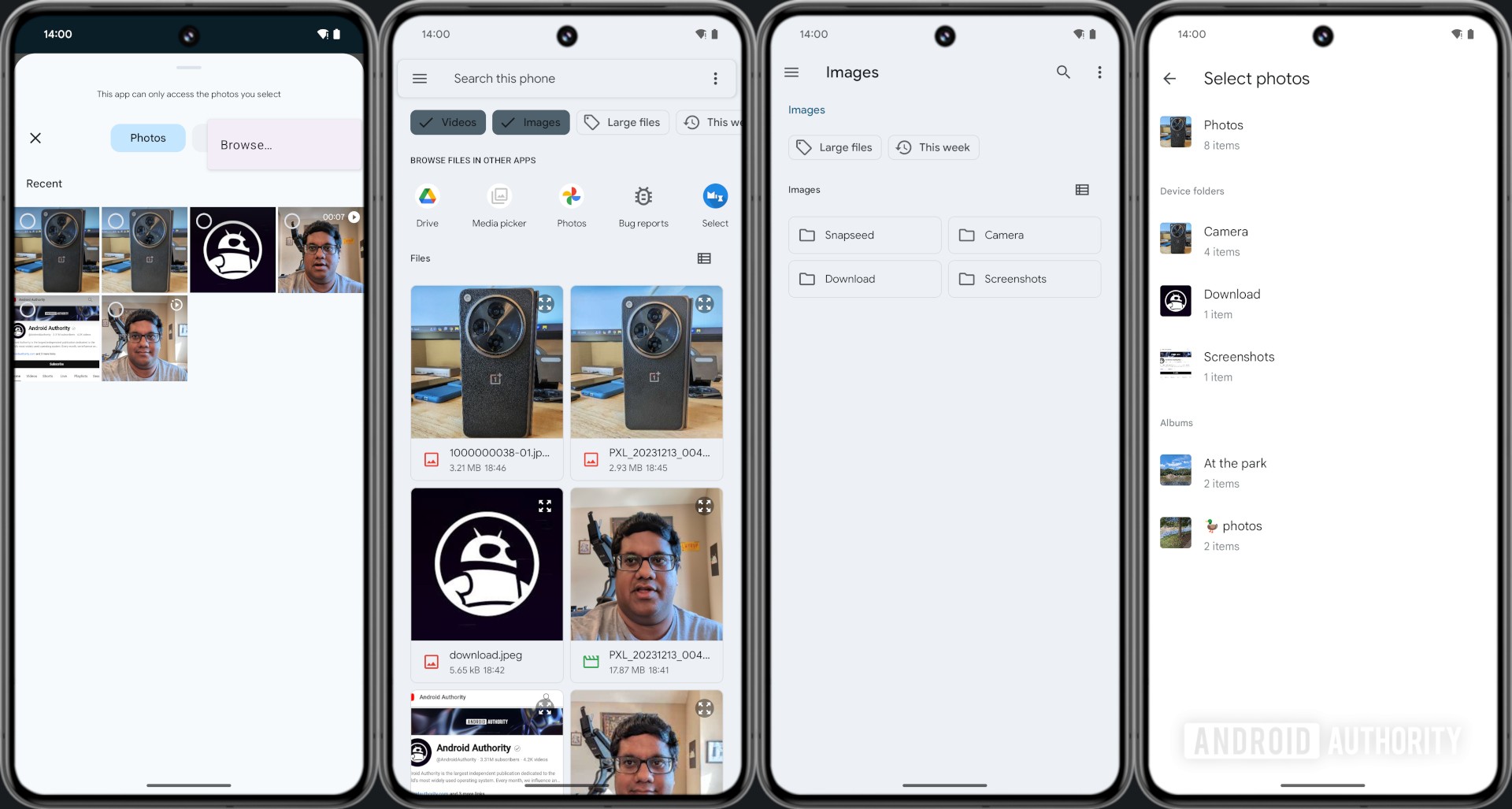
Mishal Rahman / Android Authority
Android’s file picker, which replaces Photo Picker for selecting media files, has an older UI but provides broader access to files from local and cloud storage providers. It can be called directly or indirectly (image on the far left, by pressing the “Browse” button).
The same can’t be said for the new Photo Picker, which still doesn’t have a single cloud media provider integrated with it. This is despite the fact that at I/O 2022, a year and a half ago, Google said that cloud media providers like Google Photos would be supported in the next update. This will pay off soon, as recent versions of Google Photos have added full support for Photo Picker on Android.
After activating this feature, a new “Cloud Media App” page appears at the bottom Settings > Applications. Here, we were able to activate Google Photos as a cloud media provider for Photo Picker on Android. Enabling this feature also opens up a new “Access Google Photos” option in the Settings page of the Google Photos app. This option leads to the Photo Picker page within the app that lets you decide whether you want to give the Photo Picker access to the photos and videos you’ve stored on Google Photos.
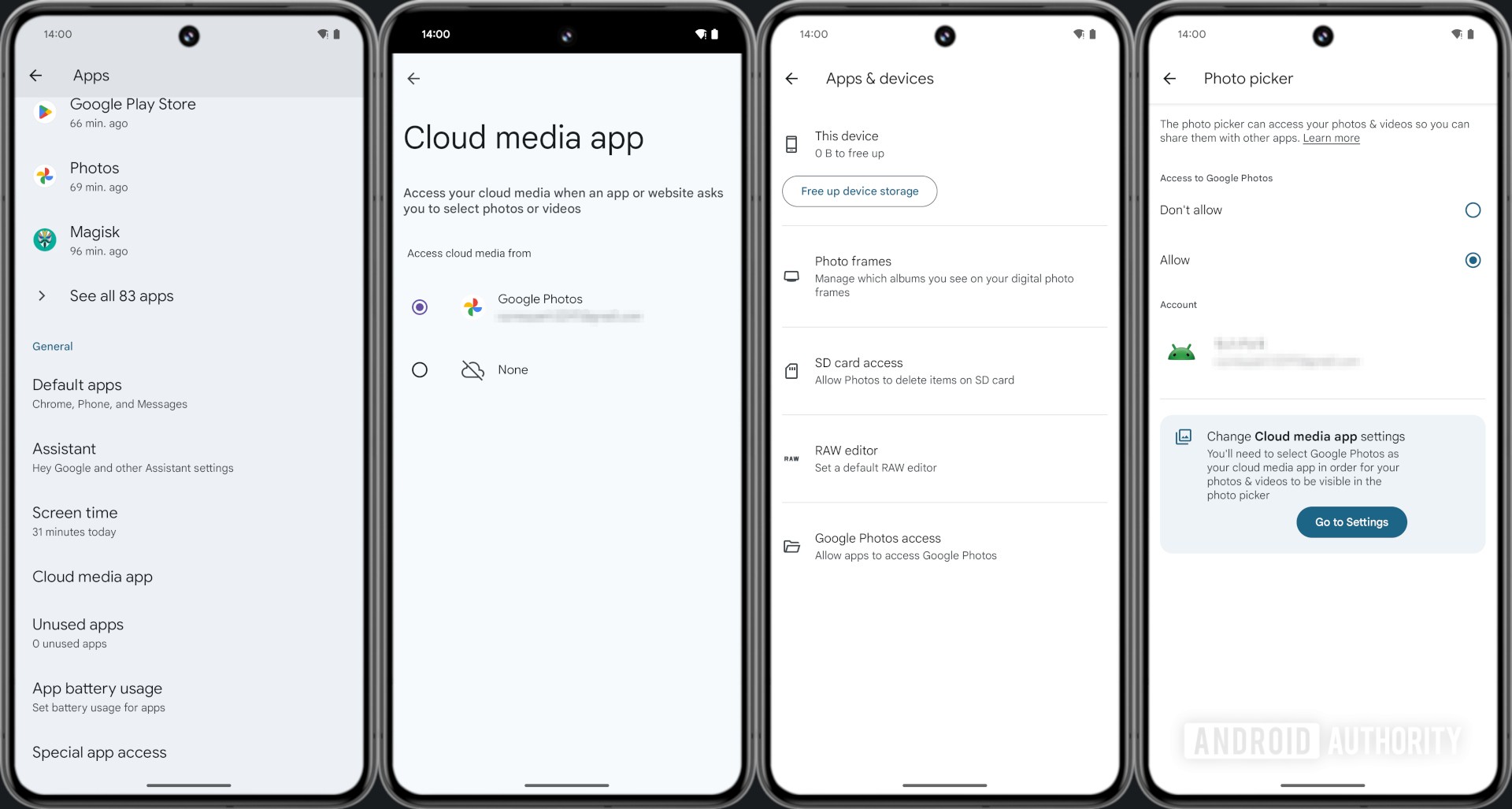
Mishal Rahman / Android Authority
Different ways in which you can set Google Photos as cloud media provider for Photo Picker on Android.
With Google Photos now set as your cloud media provider, Photo Picker can pull the photos and videos you’ve backed up to the cloud. This greatly increases the number of media files I can share with the app, as shown below.
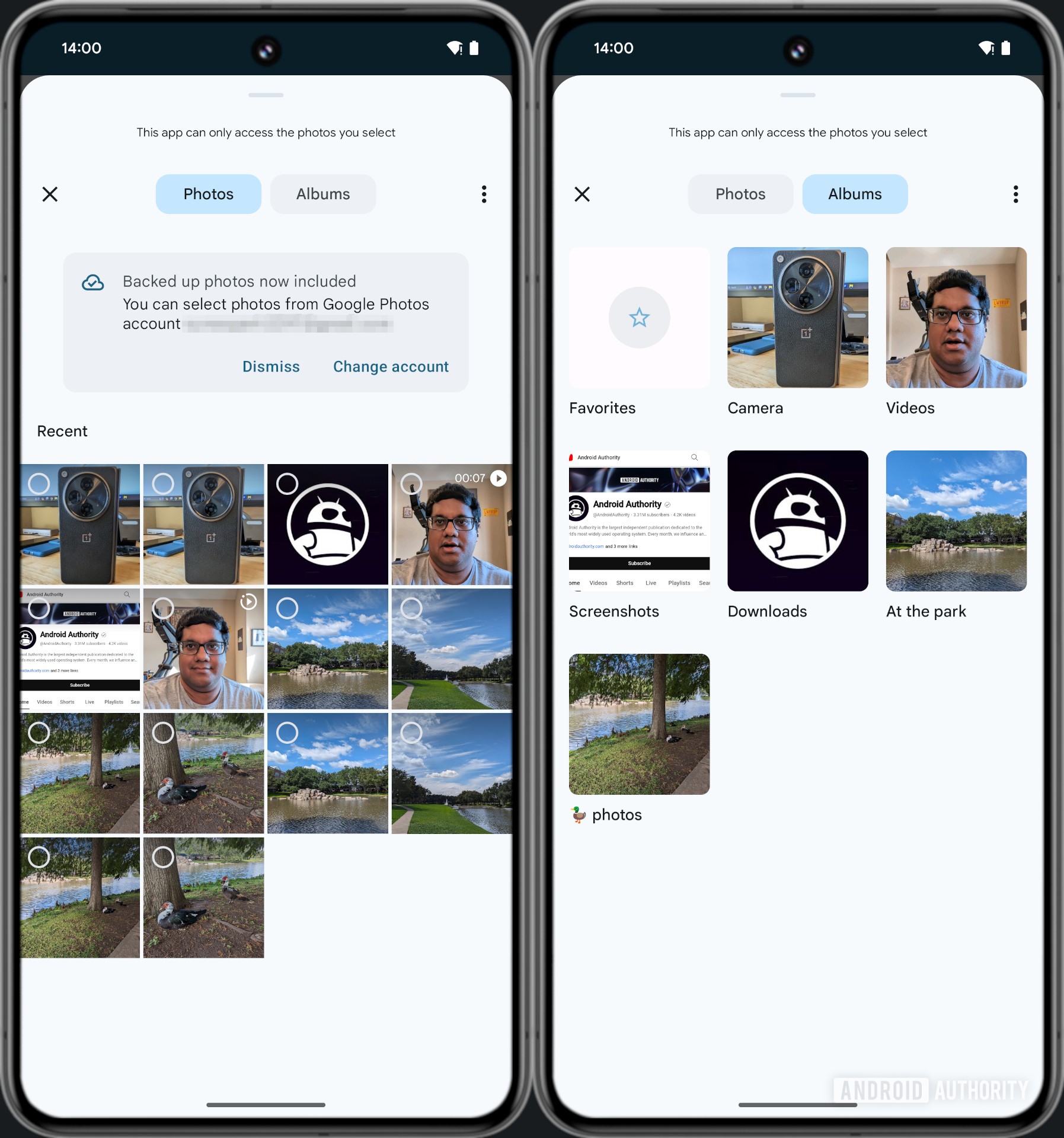
Mishal Rahman / Android Authority
A look at Photo Picker on Android with cloud media support.
However, even with this expansion, Photo Picker still has some limitations. First, the Albums tab still doesn’t show local albums created by apps like Snapseed, so you’ll need to find the media files saved in those albums by scrolling through the Photos tab. Second, cloud media items don’t appear when Photo Picker is called through the permissions dialog, which is part of a new feature introduced in Android 14 that allows users to give apps partial access to photos and videos. This means that cloud media items are only available when Photo Picker is called by an application. Fortunately, this applies even when using the app invokes indirectly Image picker, as in apps like Google Chat and Google Keep after the recent Google Play system update.
We hope that Google will soon roll out this feature to users as the lack of cloud media support in Photo Picker is one of the reasons why many developers are not using it in their apps yet. After Google Photos integrates with Photo Picker, hopefully other cloud media providers like Microsoft OneDrive will follow suit.
Google Photos is making it easier for Android users to access their cloud content with the upcoming integration of Google Photos in the Photo Picker feature. This exciting development will allow users to seamlessly access their Google Photos content when choosing images and videos to share or edit within other apps on their Android devices. With this integration, users will have even more convenience and flexibility in managing their media content across various apps and platforms.

